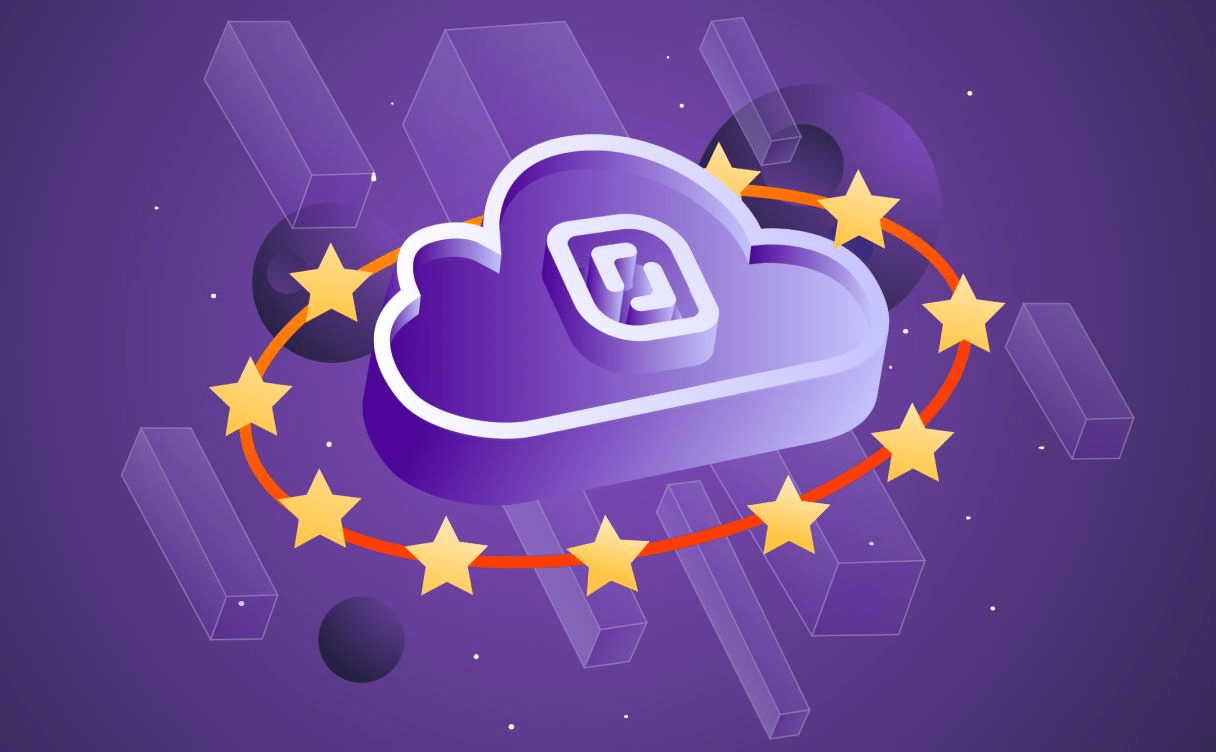Spurred by the global pandemic, countless industries’ digital transformation has taken shape at unprecedented speed and scale in 2021, with the cloud further solidifying its position as the core pillar upon which the digital world is built. Indeed, last year, the global cloud market remained firmly on track with analysts’ predictions of tenfold growth by 2030 (compared with 2020).
Alongside growing dependence on cloud technologies has come increased scrutiny. Stakeholders old and new expect the industry to continue making rapid strides, both in terms of developing new solutions, and in being responsive to the technical, practical, and societal challenges of today.
Though most challenges are nothing new per se, the cloud ecosystem players, propelled by an influx of interest and resources, have accelerated their search for answers. 2022 will be no different. We will continue to see the technology evolve and be adopted at breakneck speeds. Above all, we will see startups and scale-ups increasingly care about other factors than price and performance when it comes to choosing cloud services: namely independence, resilience, freedom of choice, and of course sustainability.
But that's just for starters! Here are the 10 cloud trends to watch in 2022.
1. Multi-cloud's rise
Multi-cloud, or the use of multiple cloud providers rather than relying on just one, will mechanically gain significant traction in 2022, as stakeholders become increasingly aware of the risks of putting all their eggs in one basket. Indeed, downtimes from leading service providers have caused major headaches for single-vendor customers, as was demonstrated with AWS's major recent outage, which was felt around the world.
The multi-cloud trend will as such see a greater provision of choice, price arbitrage and risk management, both geopolitically speaking, and in terms of resilience. Furthermore, the promise of ensuring business continuity while reducing costs will ensure that multi-cloud solidifies its position as the status quo.
2. People don't want to deal with servers
Adoption of modern cloud architecture abstraction will continue to progress rapidly both on the container side, with Kubernetes in particular, and on the Serverless side.
According to Gartner, by 2025, 85% of organizations will run containers in production, up from less than 30% in 2020. This substantial growth in container adoption points to the scalability and flexibility of the architecture, which are increasingly-demanded qualities. Reducing cost and complexity will not only allow for more efficient use of resources, but also accelerate meaningful work, as less time is spent managing technology.
3. Cloud architecture will become increasingly modular
As technological needs develop and new applications are required, cloud architecture will have to become increasingly modular to support the as-yet unknown applications for the product ecosystems to work well together. This is especially felt as emerging technologies take hold and also reflected in the predicted tripling of the cloud microservices market size between 2020-2026. The agility, scalability, and efficiency of microservice architecture will prove too great to pass up on. As such, we expect IDC's 2018 prediction that 90% of apps will feature microservice architecture by 2022 to very much come true this year.
In order to build out modular Container or Serverless architectures, an additional focus will be placed on connecting “glue” products, like messaging & queueing or observability. These are the products that will set apart the good from the great.
4. AI will unlock medical research
…with AI and robotics transforming healthcare, as well as other industries. Realizing this potential, however, will necessitate increased reliance on centralized and edge cloud solutions, as the deployment of local servers for resource-intensive research will be a cost too high to bear. Cloud providers will have to step up to this challenge by offering increasingly energy-efficient solutions.
5. Open source
Open source will be hailed as the ideal solution to provide a level playing field. As the software community increasingly edges away from IP-based and patented products, the barrier to entry is significantly lowered, thus opening the doors to individuals and organizations with fewer resources – be that startups, early-stage companies, non-profits, organizations from developing countries, and more. The question will remain, however: who pays for quality open source? Who really controls it? The jury's still out.
6. Developer experience
Developer experience will be key as new generations expect in work solutions the same seamless experience they find in personal apps. When such searches fail, new solutions will emerge. Broader still, work environments will continue to evolve to facilitate productive remote and asynchronous work.
7. Purpose and values first
Young professionals are looking for sense and trying to align their personal values with how they consume, work, and play. Being able to consume locally, and with a provider that is making an effort toward long-term sustainability, is going to be as important for workers as it will be for consumers. Indeed, with 90% of millennials refusing to work for companies that can’t prove their sustainability credentials, responsibility will become a business necessity in 2022.
8. Data centers will feel the heat
Going into 2022 and beyond, data center sustainability will continue to be scrutinized, as the excessive amounts of energy and water used by many installations are increasingly brought to the public eye. Increased transparency alongside institutional and consumer pressure will spur into action those who have hitherto avoided green initiatives in favor of short-term financial gains.
We will also see the sustainability conversation move to code. Technology like Serverless will be heralded as the green choice for making wasteless use of computing energy, as it only works - and therefore consumes energy - when it’s needed, rather than being “always on”.
9. Egress fees and cloud credits
Egress fees - where cloud providers charge clients for leaving their services - and cloud credits - where the same companies give companies generous free access to their offerings before locking them in afterwards - have been a major point of cloud industry contention of late. The industry has now matured to a point where turning a blind eye to the deregulative nature of lock-in effects is no longer permissible, from both consumer protection and legal standpoints. 2022 will see activity from antitrust authorities, as foundations for either regulation or abolition will be cemented.
10. The EU will shake up competition
With leading markets (such as the USA and China) holding asymmetric public procurement policies favouring local CSPs, their European counterparts are disadvantaged at a global competitiveness level. The European Union will step in to rebalance competition conditions, which will be addressed in two ways:
- Regulating digital “gatekeepers” through the Digital Markets Act and Data Act
- Implementing cloud industrial policy based on reciprocity, a level playing field, software sovereignty, and a new Buy European Tech Act.
This will (hopefully) spur the adoption of harmonized national cloud strategies in line with these orientations.
Final thoughts
While much of our predictions for the cloud in 2022 revolve around steady improvements in the quality of life for all stakeholders, we're also seeing broader trends that will fundamentally reshape the digital landscape of tomorrow. In the coming years:
- Cloud worldwide revenue willultimately take over Telecom revenue: IDC forecasts the public cloud segment to grow by 21% by 2025, and to $809 billion by mid-decade. If the growth is sustained - and we believe it will be - we could see cloud revenue eclipse that of the telecoms industry, even before the end of the decade
- Web3 and blockchain technology adoption will accelerate: Blockchain and web3 are being heralded as “the next era of the internet”. Whilst the reality beyond the hype remains to be seen, with Blockchain-as-a-Service (BaaS) solutions sitting on multi-cloud infrastructures, it will become easier for anyone to make use of the benefits blockchain offers without requiring deep technical expertise
- The Metaverse will see a trove of new entrants: Could it finally be time for mainstream VR and AR adoption? Has a new frontier been unlocked? The “metaverse” is another thriving buzzword right now, which will need considerable cloud support if it is to truly take off. Meanwhile, Meta may struggle to appear as a team player, even though Mark Zuckerberg has already (reluctantly?) admitted that one platform will not rule them all...
- Apple will go ahead with an augmented reality play: Announcing new technologies at their WWDC conference, and with AR-enabled glasses rumoured to be hitting the markets in 2022, Apple will bring increased demand in 5G and low-latency telecom/cloud infrastructure, thus reshaping how we look at technology
- Europe will position itself on Quantum Computing: indeed, it has done since 2019. Could this be too late to rival with Google and IBM’s claimed advances? Rather than through tech giants, Europe’s response will come from numerous labs and regional startups. The race has just begun!
- Self-driving cars still won't be widespread: Sure, Tesla has been desperately making strides. But broader adoption not only requires comprehensive intra-city, inter-city, interstate and cross-border infrastructure, but also legislation. As well as a change in mentality, which might be more difficult to shape than the steel for 5G towers…
Or not! These are predictions, after all. Still, one thing's for certain – we're at the precipice of major global digital transformation, which will be, in large part, enabled by cloud technologies. Roll on, 2022!



